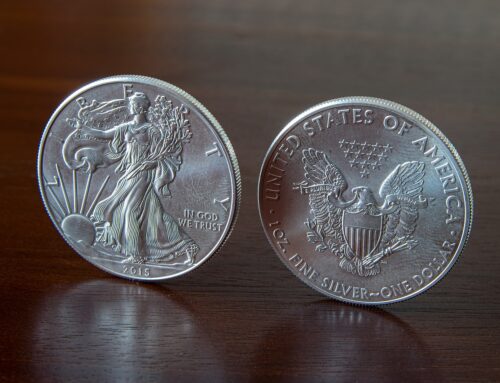When you’re designing or refining your investment process, it can be helpful to think about your process as an attempt to optimise the intersection between depth and breadth.
- Depth. Your skill in a given area, or how well you play.
- Breadth. The number of independent bets in the portfolio, or how often you play.
This is sometimes referred to as the fundamental law of active fund management, which goes something like this: If you and your competitor are equally skilled, but she has access to more investment ideas or opportunities, she will deliver the better results. It seems to follow, then, that your process design should simply attempt to maximise your opportunity set. Keep depth constant, maximise breadth, et voila!
Except this is one of those ceteris paribus arguments where all things are not actually equal. There is a trade-off between depth and breadth, and the consequences of misunderstanding or misjudging the trade-off are not always self-evident and not always trivial.
A terrible (for him) but good (for you) example of this is the experience of Michael Steinhardt, who ran the highly successful hedge-fund firm, Steinhardt Partners. Much of Steinhardt’s success was attributable to the firm’s depth of expertise in US equities. As an illustration of the firm’s focus, Steinhardt had half-jokingly said that he would never invest in a place where he did not know the postal code.
The expansion of the firm’s existing capital base through excellent investment performance, combined with significant interest from new investors, made it one of the larger hedge funds in the world in the early 1990s, with around $5 billion under management. But the increase in assets under management began to nullify the firm’s depth of expertise in US equities, especially in relatively illiquid small- and mid-cap issues. They simply couldn’t deploy the larger sum of capital in the way that they had before, and the logical response was to create additional breadth by identifying new opportunity sets.
Steinhardt later said, “Having been successful in the markets that I had ventured into over time, I had confidence that the quality of my investment judgment was applicable worldwide. Perhaps rapid success had bred complacency.”
The firm began to take positions in the large and seemingly liquid international bond and swap markets, and they also began to invest in emerging-market stocks. The firm’s swiftly expanding breadth is illustrated by the fact that they had positions in securities that six months previously Steinhardt had never even heard of, let alone knew the postal code, and his daily P&L report was now 30 pages long.
Recognising that his existing team lacked sufficient expertise in these new markets, Steinhardt rapidly expanded his staff from a handful of people located in New York to a headcount of over 100 people situated all around the globe. But, he said, “I was reliant on new people with whom I had never before been in the trenches. It was a recipe for disaster.”
The firm’s positions in non-US bonds were leveraged through the repo market to create exposure of $30 billion on their capital base of $5 billion. This degree of leverage meant that each single basis point move in bond yields had a $10 million impact on the P&L. These bond bets were enormously profitable and were responsible for most of the firm’s 60% return in 1993.
But in February 1994 the Fed surprised the markets by raising rates, which triggered a major sell-off in the global bond markets. Steinhardt Partners tried to reduce their position size but there was simply not enough liquidity for them to exit, and they were down 20% in a flash. Steinhardt said that he seriously misjudged how crowded their European bond trades were when he discovered that many of the banks’ trading desks were simultaneously trying to offload their long positions.
The firm ended the year down 30%, its worst year ever, in which they saw $1.5 billion go up in smoke. Steinhardt said, “But I would be wrong to characterise myself as simply a victim of a liquidity squeeze or an unexpected market turn. If I was a victim of anything, it was of hubris and unjustified confidence in my own abilities – perhaps the result of too many too-easy successes.”
This overconfidence had given rise to the belief that they could reach for breadth without compromising depth. But Steinhardt later said, “…I did not have a competitive or intellectual advantage.” To which he added, “I had lost sight of my own limitations. I was shocked and humbled by my failure.” He was candid about the firm’s attempt to quickly manufacture depth in new areas of the market by going on a hiring spree: “With our new and relatively inexperienced team, we simply were not on top of the game.”
Where before Steinhardt’s ego had been stroked by prospective investors who were eager to get a piece of the magic, now he was peppered with calls from journalists wanting to pick through the wreckage: “Answering reporters’ questions was unmitigated pain, not to mention a huge distraction.” The experience of 1994 was devastating for Steinhardt: “It had taken a part of me that could not be retrieved.” He fell into a state of depression: “I remember being so badly dispirited…that I could hardly function.”
He also revealed the risky existential proposition that many fund managers half-consciously adopt, where you equate who you are with your investment performance. He said, “I could not avoid feeling that my very worth as a human being depended on my continually making money. What was I worth when I lost?” Steinhardt limped on for another year before he closed down his firm and withdrew from the industry.
There are a number of lessons to be learned from Steinhardt’s experience, but the most germane to the subject of process-design is that to get the best results you want to optimise the intersection between depth and breadth, but there can be catastrophic consequences if you over-reach for breadth. When your investment process leads you to act as if you have an edge when you no longer have one (or never did), you will have your head handed to you.
- What is your team’s skill relative to that of your competitors? What’s your depth?
- What is your team’s opportunity set? What’s your breadth?
- If you attempt to change the one, how will that impact the other? What might that mean?
References
- Justin Newdigate: Noise (2019)
- Michael Steinhardt: No Bull (2001)
- Richard Grinold: Active Portfolio Management (1999)







Leave A Comment